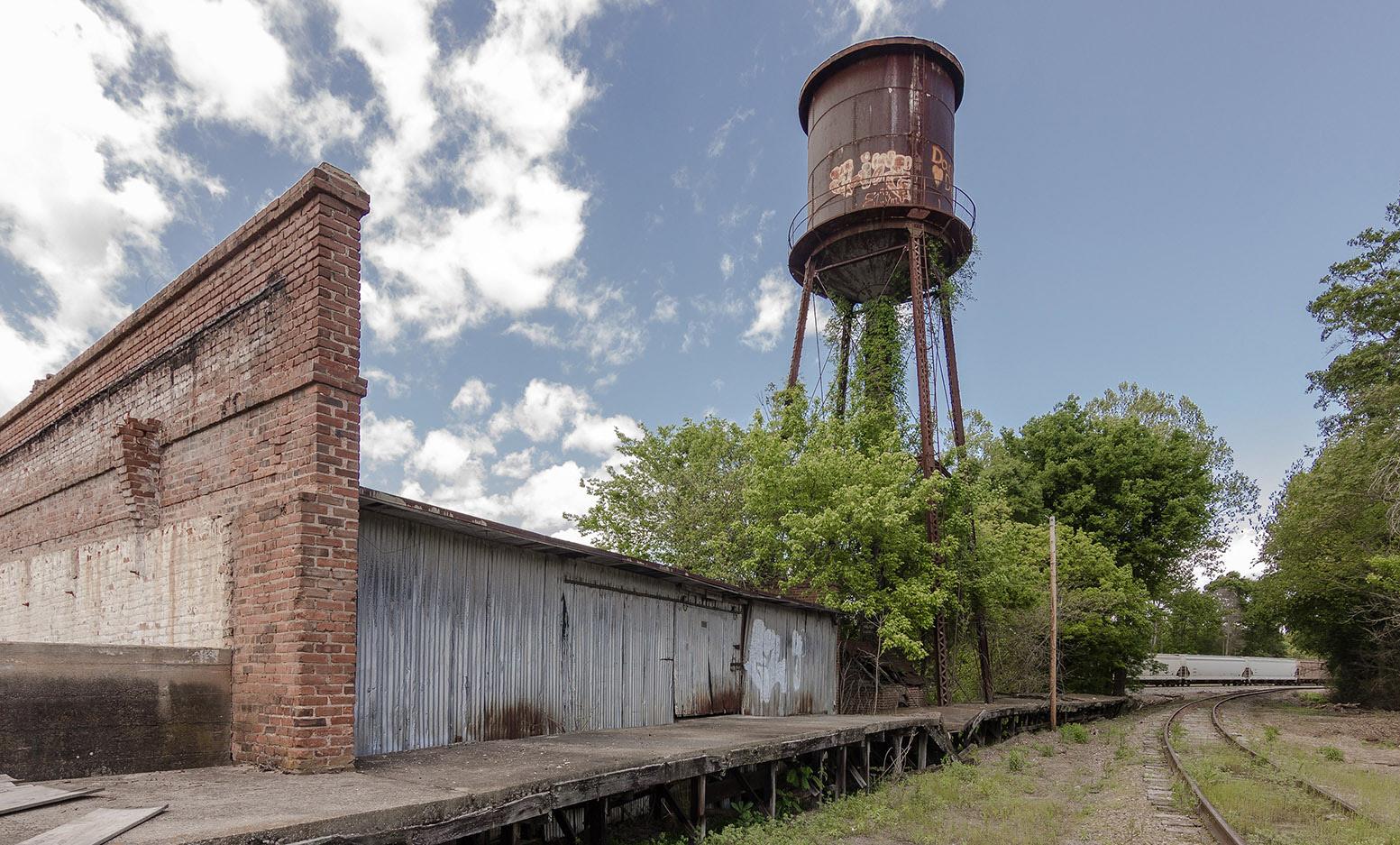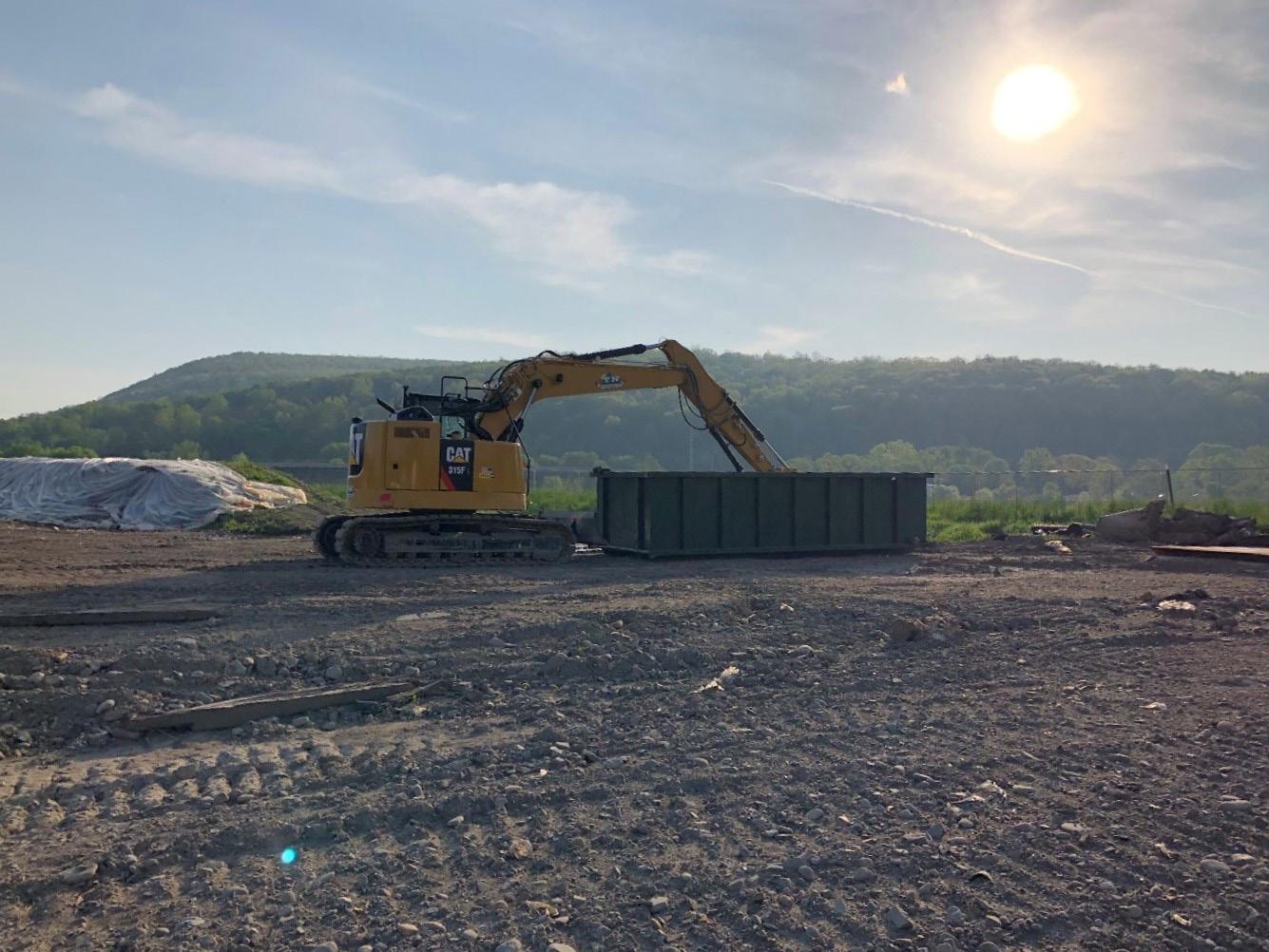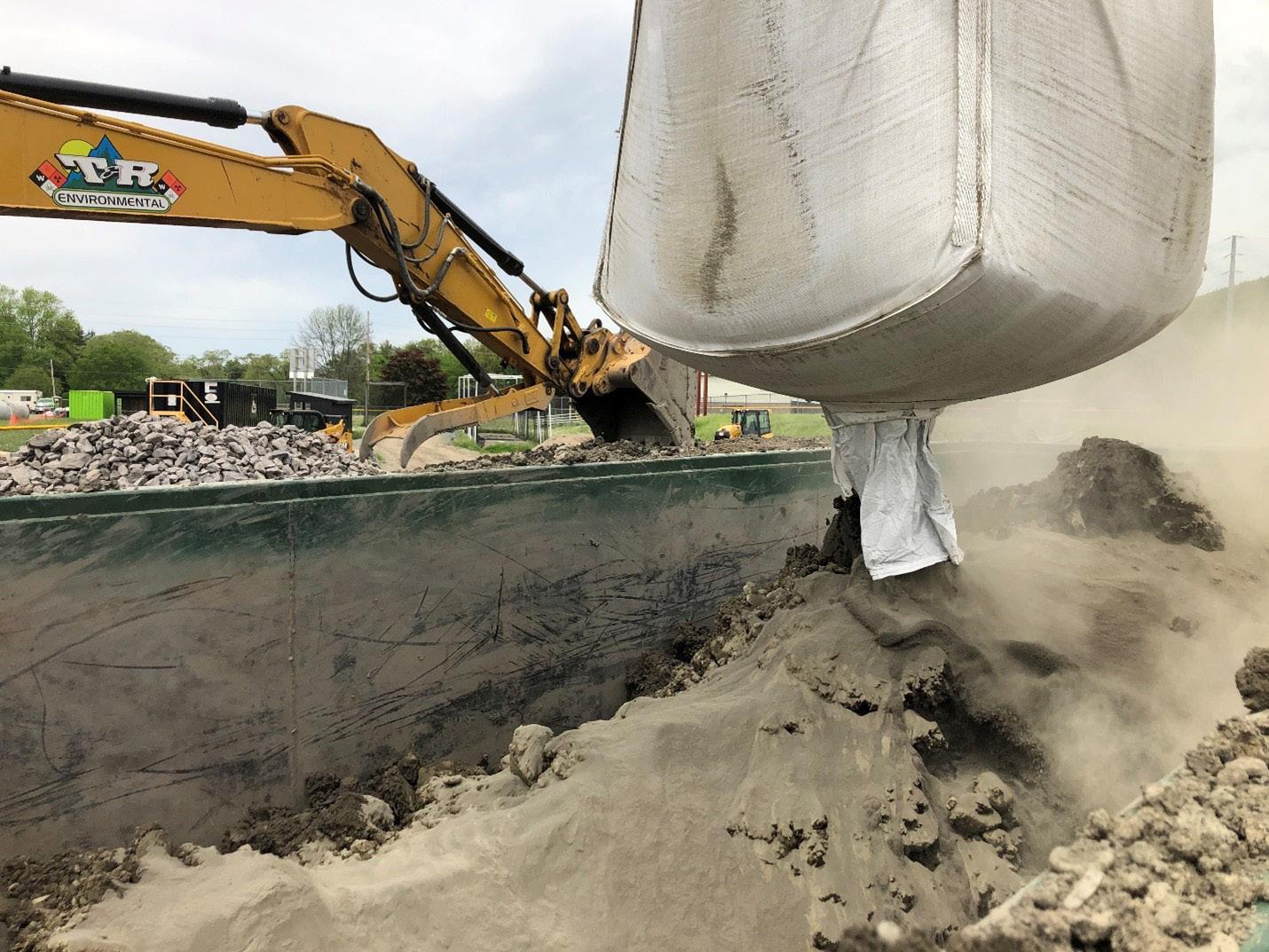
6 minute read
Taking an on-site approach to soil stabilization and remediation (Stantec) (Feature
Taking an on-site approach to soil stabilization and remediation
Chemical stabilization of heavy metal contaminated soil unlocks greater opportunity for site redevelopment
By Kevin Ignasziak, Stantec
Redevelopment of contaminated sites, or brownfields, never stops. In fact, the US Environmental Protection Agency estimates that there are over 450,000 such sites—brownfields as they are more commonly known—in the country. With redevelopment comes the need for remediation and the careful consideration of factors such as ideal strategy, cost, and timeline.
In the Northeastern US where many communities were previously home to industrial manufacturing, heavy metalscontaminated brownfield sites are among the top focus areas for remediation by our team. This type of contamination comes from sources that are too numerous to count but it’s frequently from historic manufacturing and firing range operations.
Contaminants include lead, arsenic, and cadmium, just to name a few. Generally, soils are determined to be impacted via laboratory sampling performed under a site characterization or investigation. These steps may be required as part of a land acquisition, due to a public complaint, or a multitude of other reasons. Regardless of how the contamination is encountered or where it stems from, something must be done to address the issue prior to redevelopment.

In the Northeastern US, many communities were previously home to industrial manufacturing.
Advancements in the field
Technologies relating to on-site treatment and stabilization of waste soil have advanced significantly over the past 20 years, including:
• Thermal Desorption: Off-site remediation technology that utilizes heat to volatilize contaminants (volatile organic compounds) so that they can be separated from the soil particles and either collected and treated or incinerated.
• Bioremediation: Broad term encompassing many on-site remediation technologies that are focused on the enhancement of naturally occurring degradation of contaminants performed by soil microorganisms. This method is generally most effective on petroleum and chlorinated sites.
• Physical treatment: Technologies that physically reduce the impacts of contaminants. These include soil washing, physical encapsulation of contamination within a defined area (slurry walls, sheet pile walls, injection walls, permeable reactive barriers), or physical transformation of soil to a glass-like substance in a process called vitrification.
• Chemical Fixation: A remediation technology that reduces the mobility of a contaminant in soil. For example, solidification of heavy metals onto soil particles to reduce leachability of metals into the surrounding soil.
These options provide clients with alternatives for waste management and disposal options over the standard “hog and haul” approach favored in the past, whereby soil is excavated and removed via truck, resulting in higher greenhouse gas emissions.
For many of these heavy metals contaminated sites, the previous best method was to excavate, sample, characterize, and dispose of contaminants in a permitted landfill. About as simple as it gets. But what if these soils exceed the EPA’s hazardous threshold for a specific contaminant?
In many instances, this simply meant disposal at a different facility permitted to accept hazardous waste in accordance with the Resource Conservation and Recovery Act (RCRA) passed in 1976, albeit with a transportation and disposal fee that is many times higher (up to four times more per ton) than for non-hazardous waste. These designated landfills, sometimes referred to as RCRA Subtitle C facilities, are few and far between and are generally limited in capacity. It’s also important to note that switching landfills to accommodate the hazardous waste stream can have many consequences.
In the simplest sense, this affects the project’s bottom line by increasing transportation and disposal costs. Many times, these costs can make up a large portion of the total project budget and are prohibitive for clients. Until recently, there was not much that could be done to avoid these costs, but over the past three years, our design and field teams have been incorporating the use of on-site chemical stabilization for soils impacted by hazardous heavy metals to reduce these hefty transportation and disposal costs.
A new approach to stabilization
Chemical stabilization via mixing an amendment into the soil has been successfully applied to soils impacted by a variety of metal contaminants. The process does not destroy or remove the metals, but instead decreases their mobility and may reduce their toxicity. Essentially, the process encapsulates the particles to prevent leaching of contaminants in a landfill setting.

Chemical stabilization via mixing an amendment into the soil decreases the mobility of contaminants and may reduce their toxicity.
Stabilization chemicals most commonly applied to metalsimpacted soil include reagents such as cement, fly ash, slag, phosphorus-containing materials, clays, and other proprietary blends. Conventional excavating and mixing equipment can be used to mix the soil while blending in a reagent to treat the contaminant.
In instances where shallow soil contamination exists, the reagent can be mixed using standard equipment such as a bucket or mechanical mixing head to the end of a tracked excavator, in place. The mixing process creates a relatively homogenous soil matrix, reducing concentrations of contaminants within the mixed zone and promoting contact with the treatment reagent. It also results in a volume increase of at least 10 to 15 percent.
Mixing the reagent into the soil while it is in place also has the potential to avoid licensing and other requirements that pertain to on-site treatment of hazardous waste (depending on regulatory oversight). Toxicity leaching characteristic procedure (TCLP) sampling, and in, some cases, multiple extraction method (MEM) and total metals sampling (depending on regulatory agency requirements) is performed on the stabilized soils to confirm leachable concentrations are below hazardous thresholds after mixing.
This approach has very few limitations when evaluating its effectiveness for application at sites. Because of this, heavy metals-contaminated brownfields are a prime candidate for its application regardless of size or location.
Putting it into practice
Stantec’s Northeast Environmental Services Group recently completed a similar project for a confidential client in the Southern Tier of New York. The client was faced with a storm sewer pipe replacement, however the pipe was buried in lead-impacted soils determined to be hazardous during a site characterization. Overlying soils would require excavation, management, and off-site disposal.

Hazardous soils are uniformly mixed with a stabilization reagent in batches, until the color became uniformly lighter throughout— much like mixing cookie dough.
We proposed the use of a soil stabilization agent on-site which was approved by the New York State Department of Environmental Conservation (NYSDEC) following an extensive review. Our teams observed the mixing stabilization process performed by the client’s environmental contractor. Hazardous soils were uniformly mixed with a stabilization reagent in a metal mixing container (similar to a standard roll-off container) using a standard excavator bucket. Soils were mixed in batches until the color became uniformly lighter throughout.
The stabilized soils were sampled for lead and the results were shared with NYSDEC and the proposed local, non-hazardous landfill. Prior to stabilization, lead concentrations were nearly three times the hazardous waste threshold. After the stabilization process, many of the collected samples were nondetect for TCLP concentrations of lead. MEM samples were also collected and demonstrated that long-term leaching within an acidic environment was not an issue. Soils were disposed of at the local municipal non-hazardous landfill for less than a quarter of the price of the nearest hazardous landfill, resulting in an estimated cost savings to the client—from transportation and disposal alone—of $110,000.
By challenging the status quo and taking an innovative approach to decades-old techniques, extensive cost savings can be unlocked—and an even greater number of contaminated sites can be cleaned up. q
Kevin Ignaszak is a Principal in Stantec’s Rochester office where he channels his keen appreciation of the importance of a clean environment into a career devoted to environmental investigation, remediation, and compliance.
APRIL 2021 The ROCHESTER ENGINEER | 25










